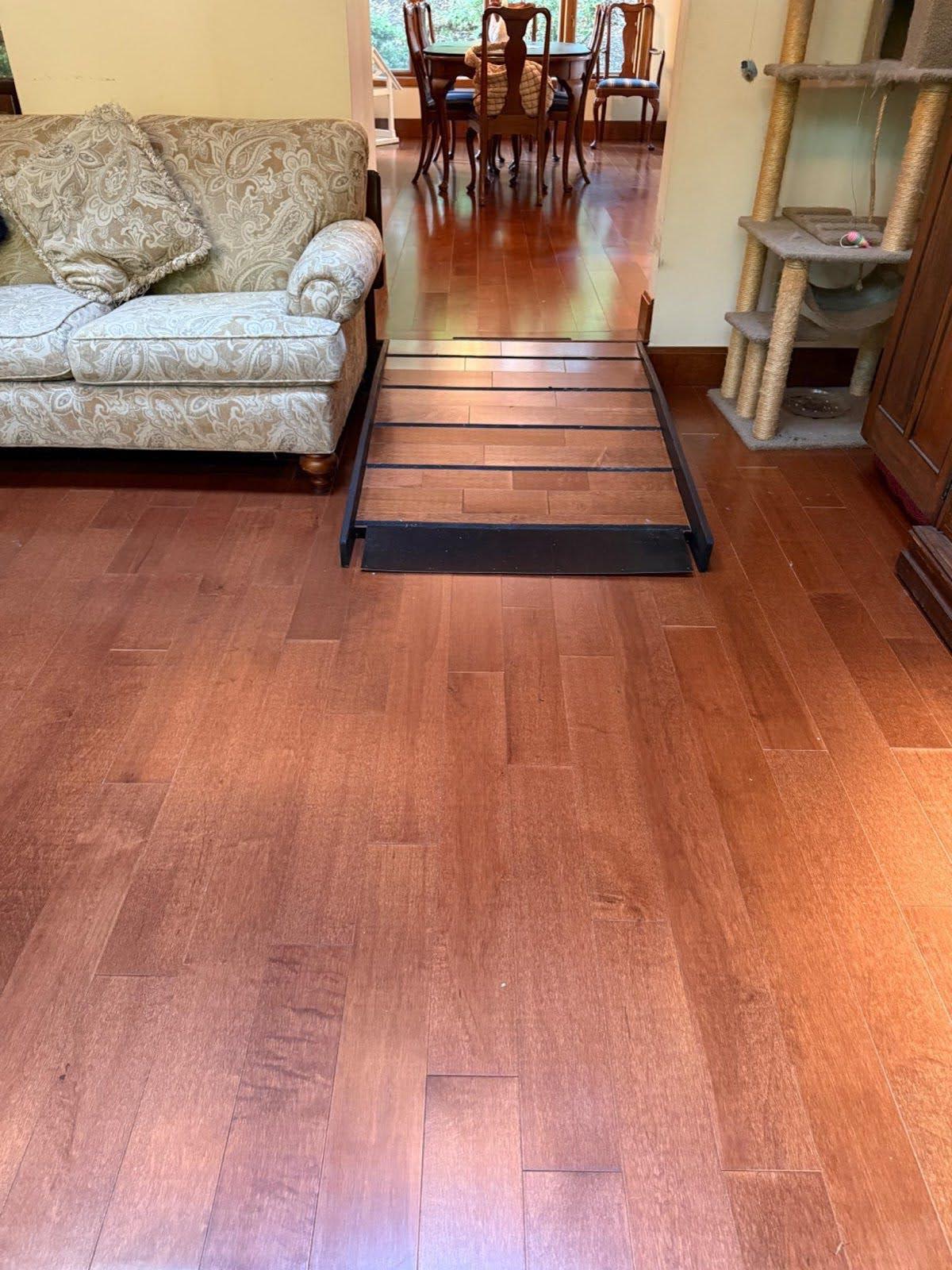Many, if not most, Arizona homes have concrete slabs for subflooring. While an excellent material for the climate, it does pose some challenges when installing many types of engineered and hardwood flooring products. Find out how to install hardwood floors over concrete correctly to prevent long-term damage.
Can You Install Hardwood Flooring Over Concrete?
Yes, you can install most wood flooring products over a concrete slab, but you’ll need to choose the correct wood and understand the preparation process.
The risk of putting wood floors over concrete is moisture. While it may not look like it, concrete is a surprisingly porous material that allows moisture from the ground to rise up to the finishing flooring above. Wood flooring absorbs moisture from the air when humidity levels are low, which means added moisture from the ground will cause it to warp, buckle, and rot if left unaddressed.
Read More: The Best Flooring for Desert Climates
How to Install Wood Flooring Over Concrete
Due to the specialized tools and meticulous process required, always trust a professional hardwood flooring contractor like Floor Coverings International® of Chandler-Gilbert to handle your wood floor installation.
1. Concrete Subfloor Prep
First, the installation team will test the slab’s moisture content. If moisture levels are too high, you may need to undergo mitigation efforts to lower the moisture content before installation.
Once the slab is cleaned, leveled, and the wood flooring is acclimatized to the space (this usually takes a few days in total), we’re ready to put wood on concrete!
2. The Installation Process
Next, we’ll install a moisture barrier to prevent water vapor from reaching the wood from the concrete underneath. We typically use polyethylene sheeting, a roll-on liquid sealant, or underlayment with an integrated moisture barrier. Our installation team will explain the recommendation, so you know exactly why we use the chosen material.
3. The Materials
We highly recommend engineered wood flooring over concrete because it is more dimensionally stable than solid hardwood. You’ll still enjoy a real wood veneer on the surface, and there are nearly as many species, shades, and finishes to choose from as solid wood options, if not more!
If you do choose solid wood, we may recommend using a sleeper system, which adds treated wood planks between the vapor barrier and a layer of rigid foamboard. This adds more protection for the hardwood but changes the flooring height and may increase project costs.
Once the wood flooring is installed, homeowners should be extra vigilant for signs of moisture damage, such as warping, buckling, or gaps. Even the Arizona desert has its moisture, and the best way to avoid big problems is to address small issues right away.
Trust the Wood Flooring Pros of Chandler-Gilbert
Floor Coverings International® of Chandler-Gilbert offers an expansive range of solid and engineered wood flooring options from the world’s top manufacturers. Let our trained and experienced team assess your home and recommend the right materials to align with your goals, vision, and budget. See what makes us the area’s top flooring contractor; schedule your free, in-home consultation today to get started.



